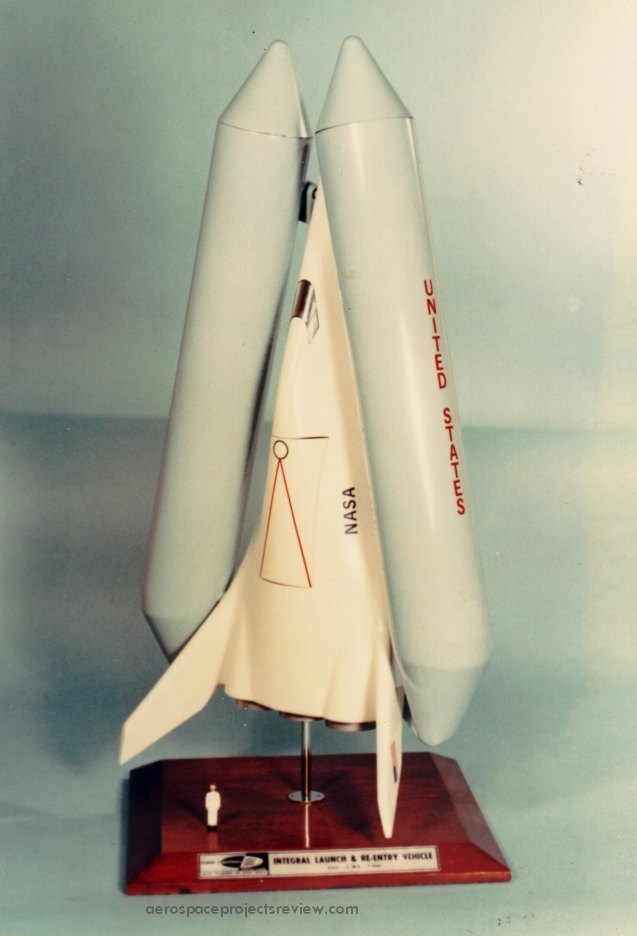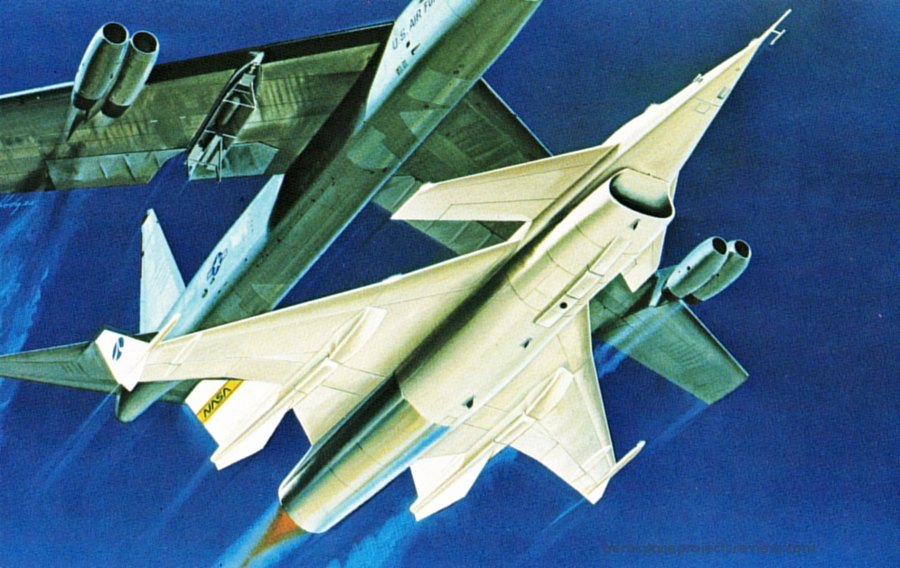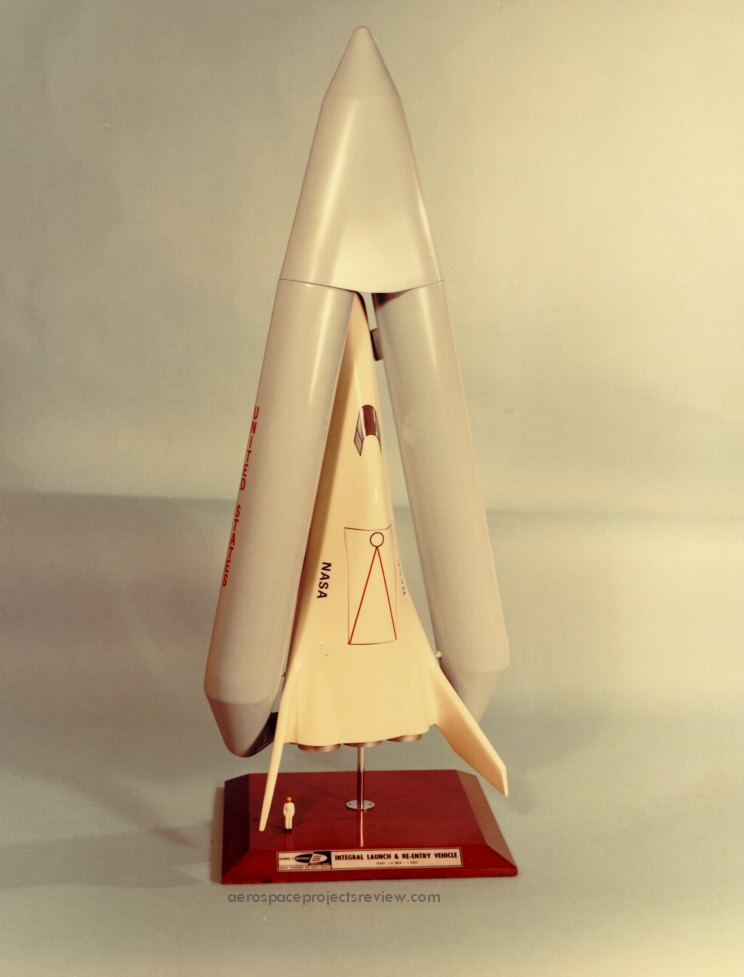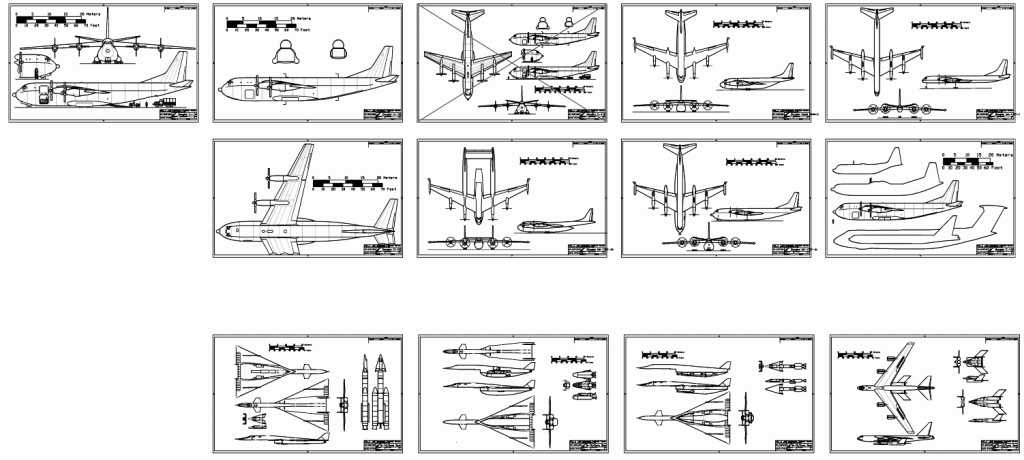Another photo (via the NASA HQ History Office) of the Lockheed STAR Clipper. This was an early stage-and-a-half concept with a reusable orbiter and expendable propellant tanks. Note that this version does not have an aerodynamic fairing over the noses of the the propellant tanks. Vastly more info on this is available in APR issue V3N2.
Rockwell artwork from the late 1970s depicting the launch of a HiMAT (Highly Maneuverable Aircraft Technology) subscale remotely piloted test vehicle from a B-52 carrier plane. While HiMAT was based on the design of a full-sized advanced fighter, it was a valuable program in its own right, demonstrating new structural materials (such as carbon fiber) and computerized flight controls.
A photo (via the NASA HQ History Office) of the Lockheed STAR Clipper. This was an early stage-and-a-half concept with a reusable orbiter and expendable propellant tanks. Vastly more info on this is available in APR issue V3N2.
Where I live is not under the normal commercial airline routes, so jetliners tend to stand out, especially when they are relatively low. Earlier today I saw what appeared to be a white 747 flying fairly low over the area; I took the rather unimpressive photos below. It’s *not* a 747; instead it’s a 707/RC-135 derivative with great big turbofans and *things* under the wingtips. Any ideas? It seemed to be flying from nowhere to nowhere, heading northeast, probably going north of Logan. *Perhaps* aiming for Logan airport.
UPDATE: First comment mere moments after posting seemed to nail it: E-6 Mercury, flying command post. Given the role this plane fills, it’s just a little bit creepy to have it flying overhead.
Lukla Airport in Nepal is small, and at 9300+ feet altitude. It’s also one of (if not the) most dangerous airports in the world.
[youtube OMiXZqEnSd0]
[youtube EvFo2VBTLck]
There’s no wasting time taxiing after touchdown…
[youtube F4fEblsidH0]
And while not as terrifying, this looks like fun too:
[youtube w_Pz94DIhvs]
Sigh. Man I miss flying…
As seems to happen way too often, a simple project to draw a few nuclear weapons as appropriate scale references for Orion pulse units grew sorta out of control… now there’s a collection of American nuclear bombs, to American nuclear-tipped missiles, to American nuclear weapon-carrying vehicles. Tucked in there is the Soviet Tsar bomb.
Anybody got any good ideas what, if anything, I should do with this from here, I’m all ears.
A paragraph or so from Czysz/Bruno’s “Future Spacecraft Propulsion Systems,” where they discuss a little problem in aerospace: over the last generation or two, as our ability to collect and analyze data has increased, out actual physical progress has stalled or even slipped backwards.
I’ve been involved with the whole spectrum of aerospace… from two guys testing rocket components out of the back of a truck in a mostly-empty parking lot, to major aerospace contractors working on NASA manned vehicles. And I gotta tell ya… there was much more progress – certainly much more forward momentum – at the small end. Why? Because we *didn’t* have all the analysis hardware and software. If we wanted to know how hot something would get, we had to actually put it in the fire. In doing so, you often learned things that you would *never* learn by simulation.
At the end of a simulation run, all you’ve done is shift some electrons around, perhaps consumed a whole lot of processed tree slices, and increased the entropy of the universe. At the end of a test run, you’ve actually *built* something. If it works, you are *far* ahead of the simulator. If it didn’t… you are very likely *still* far ahead of the simulator, if you have the wit and grit to understand what went wrong and to correct it and try again.






















